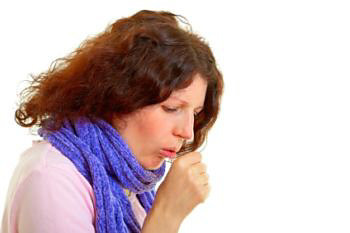Asthma Triggers: What They Are and How to Avoid Them at Home

August 19, 2013
You know the pains of asthma attacks.
Coughing, wheezing, and feeling like you can’t catch your breathe is a horrible experience.
Unfortunately, there’s no way get rid of asthma. But you can avoid asthma triggers which lead to asthma attacks.
We’ll describe what those triggers are and how you can avoid them so that your loved ones feel at peace when they are at home.
Common asthma triggers
You’re probably aware of most of these, but there are a few less commonly known asthma triggers.
According to the Centers for Disease Control and Prevention (CDC), common asthma triggers include:
- Dust mites
- Cockroach allergens
- Pets
- Mold
- High humidity (this is not only irritates asthma symptoms, but helps mold grow)
- Tobacco Smoke
- Smoke from burning wood or grass
- Food additives
- Chemicals from air fresheners
How to avoid asthma triggers
It would be too simplistic to just say, “Stay away from asthma triggers.”
There are things that go on in your home that you may not even be aware of that trigger asthma symptoms. In fact, according to the EPA your indoor air may be 2 to 5--up to 100 times--more polluted than outside air because of air quality problems you’re not aware of.
Here are a few ways you can keep your home’s air clean:
- Install a whole-home air cleaner- Also called air purifiers, air cleaners clean the air throughout your entire home, removing the microscopic, odor-causing particles as well as any bacteria or viruses that may be inside your home by catching them as they come through your ductwork.
- Change your air conditioner’s air filter regularly- A dirty air filter can no longer efficiently catch allergens and dust. So check the air filter at least once a month to see if it’s dirty.
- Install a dehumidifier- The Sarasota-area has high humidity. This is a problem for those with asthma because when relative humidity levels are over 50%, the number of dust mites in the air increases and mold is more likely to grow. A dehumidifier, especially a whole-home dehumidifier, can lower humidity levels in your home to a healthy level for asthma sufferers.
- Keep cockroaches out- Cockroaches and their droppings trigger asthma attacks. Make sure you clean up crumbs where you've eaten since food attracts cockroaches. If you have a cockroach problem, lay a few cockroach traps around your home.
- Seal air duct leaks- Leaky air ducts in places like a crawlspace or an attic will suck up surrounding dust in those areas and blow them to the rest of your home. See our article on how to know if your air ducts are leaking, and how to seal them.
- Avoid using air fresheners- As nice as they smell, air fresheners contain volatile organic compounds (VOCs) like formaldehyde --a colorless, pungent-smelling gas-- which can aggravate asthma symptoms.
Clean air = controlled asthma
Remember, there’s nothing you can do to get rid of asthma, but you can get control over how it affects you and your loved ones. Just identify the common asthma triggers and take the necessary steps to avoid them.
For information about asthma triggers and how to control asthma, check out the CDC’s “You Can Control Asthma” brochure.
For more information about whole-home air cleaners, dehumidifiers, or air filters for your Sarasota-area home, feel free to talk to one of our air quality experts.
Posted in: Troubleshooting